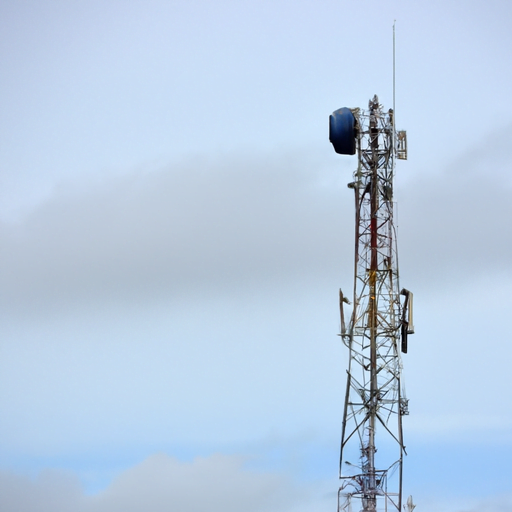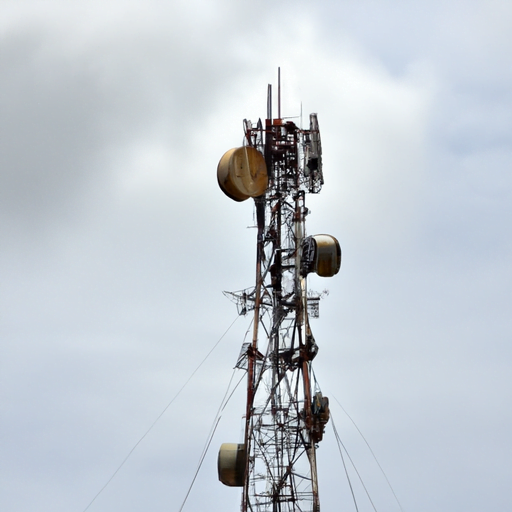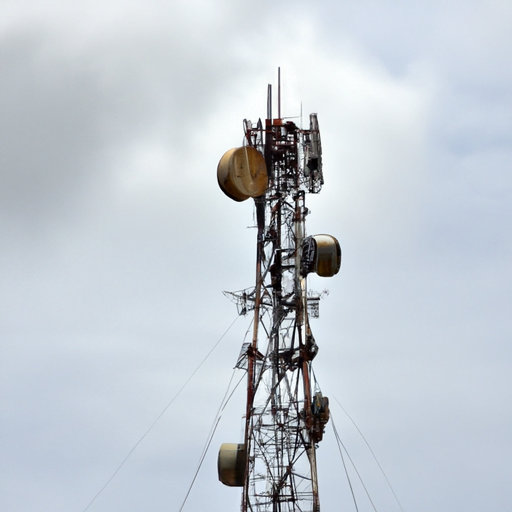Do you ever find yourself in a situation where you desperately need internet access but you’re stuck in an area with a poor signal? It can be incredibly frustrating, especially in this digital age where we rely so much on the internet for various tasks. But fret not, because in this ultimate guide, we’ll explore different strategies and tips on how to get internet in poor signal areas. Trust me, you won’t want to miss out on these valuable insights!
Now, let’s dive into the topic. There are actually several methods you can try to improve your internet connection in areas with poor signal. One option is to invest in a signal booster, which can amplify the existing weak signal and provide you with a more stable and reliable internet connection. Another option is to consider using a mobile hotspot, which utilizes cellular data to create a Wi-Fi network that you can connect your devices to. Additionally, you can also explore the possibility of satellite internet, which can be a great option for those in extremely remote areas.
In this article, we’ll discuss each option in more detail and provide you with step-by-step instructions on how to set them up. We’ll cover everything from signal boosters and mobile hotspots to satellite internet providers and their coverage areas. By the end of this guide, you’ll have a better understanding of the different solutions available to you and be able to make an informed decision on how to get internet in poor signal areas. So stay tuned for more valuable information coming your way!

The Ultimate Guide to Getting Internet in Poor Signal Areas
Living in a poor signal area can be frustrating, especially when it comes to internet connectivity. Whether you’re in a rural location or simply have a weak signal in your area, it’s important to know your options for getting internet access. In this ultimate guide, we will explore various solutions and strategies that can help you stay connected, even in the most challenging signal areas.
What are poor signal areas?
Before we dive into the available options, let’s first understand what we mean by “poor signal areas.” These are locations where the signal strength for internet connectivity is weak or unreliable. There are several factors that contribute to poor signal areas, which we will discuss in the next section.
Factors that contribute to poor signal areas
Different factors can affect signal strength and quality in a particular area. Some common factors include:
- Distance from cell towers: If you’re located far away from cell towers or internet service providers, the signal strength may be weak. This is often the case in rural areas where infrastructure may not be as developed.
- Obstacles and obstructions: Physical obstructions such as trees, buildings, and mountains can obstruct the signal and reduce its strength. These obstacles can create “dead zones” where the signal is almost non-existent.
- Interference from other devices: Signal interference can occur when multiple devices, such as routers and other electronics, are using the same frequency band. This interference can degrade the signal quality and affect internet connectivity.
- Weather conditions: Adverse weather conditions, such as heavy rain or snow, can weaken the signal. This is particularly true for satellite internet, which relies on a clear line of sight to the satellite.
- Topography: The natural landscape of an area, such as hills and valleys, can impact signal strength. In valleys, for example, the signal may be weaker due to the surrounding terrain blocking the signal.
Effects of poor signal areas on internet connectivity
Living in a poor signal area can have significant effects on your internet connectivity. These effects include:
- Slow speeds: Poor signal strength often results in slow internet speeds. This can make simple tasks like web browsing, streaming, and downloading files a frustrating experience.
- Unreliable connection: In poor signal areas, it’s common to experience frequent disconnections or dropped calls. This can disrupt online activities and make it difficult to stay connected.
- Limited options: Poor signal areas typically have limited internet service options. This means that you may be limited to slower, more expensive, or less reliable internet solutions.
- Reduced productivity: Slow or unreliable internet can hinder work productivity, especially for those who rely on a stable internet connection for their job or business.
Now that we have a better understanding of poor signal areas and their effects on internet connectivity, let’s explore the available options for getting internet access in these areas.
Available Internet Options in Poor Signal Areas
Satellite Internet
Satellite internet is often the go-to option for those in remote areas with poor signal strength. It uses a satellite dish to connect to the internet via signals beamed from satellites in space. This means that as long as you have a clear line of sight to the satellite, you can access high-speed internet even in the most remote locations. However, satellite internet can be costly, and data caps may restrict your usage.
Wireless Internet Service Providers (WISPs)
Wireless Internet Service Providers, or WISPs, offer an alternative to traditional wired internet connections. They use radio signals to transmit internet data wirelessly to a receiving antenna installed at your location. WISPs provide coverage in areas where traditional ISPs may not, making it a viable option for those in poor signal areas. However, WISPs may have limited coverage and slower speeds compared to wired connections.
Cellular Data
Cellular data is a common and convenient way to access the internet, even in poor signal areas. By using a cellular network, you can connect to the internet through your mobile device or by setting up a mobile hotspot. However, the availability and quality of cellular data coverage may vary depending on your location and the strength of the signal from your mobile carrier. It’s important to consider the data plan limits and potential for slower speeds during peak usage times.
DSL and Cable Internet
DSL (Digital Subscriber Line) and cable internet are the most common types of wired connections available in urban and suburban areas. However, they may not be readily accessible in poor signal areas. These types of connections rely on the existing infrastructure and may require additional cable or telephone lines to be run to your location. If these options are available in your area, they generally offer fast and reliable speeds.
Now that we have identified the available internet options in poor signal areas, how do you choose the right one for your needs? Let’s explore some important factors to consider when making your decision.
Choosing the Right Internet Option
Assessing your needs and usage
Before choosing an internet option, it’s important to assess your specific needs and usage. Consider factors such as the number of devices you plan to connect, the types of activities you will be doing online, and the bandwidth requirements for those activities. This will help you determine the necessary speed and data limits for your internet connection.
Comparing the pros and cons of each option
Each internet option has its own set of advantages and disadvantages. Satellite internet, for example, provides coverage in remote areas but can be expensive and may have data caps. WISPs may offer faster speeds compared to satellite but may have limited coverage. Consider these pros and cons when making your decision.
Considering cost and reliability factors
Cost and reliability are crucial factors to consider when choosing an internet option. Satellite internet, for instance, tends to be more expensive compared to other options. WISPs may have lower upfront costs but may be less reliable due to weather conditions or infrastructure limitations. Evaluate the cost and reliability of each option and choose one that fits your budget and reliability requirements.
Now that you have assessed your needs and compared the different options, you can make an informed decision. However, you may still face challenges in ensuring a strong and reliable internet signal in poor signal areas. Let’s explore strategies to enhance signal strength and improve internet connectivity.

Enhancing Internet Signal Strength
Positioning your equipment optimally
The positioning of your modem, router, or satellite dish can greatly affect signal strength. Ensure that your equipment is placed in an area with minimal obstructions and as close to the source of the signal as possible. Avoid placing them near other electronics or in areas with high interference.
Using signal boosters and amplifiers
Signal boosters and amplifiers can help improve signal strength by boosting the received signal and amplifying it for better transmission. These devices are designed to enhance both cellular and satellite signals and can significantly improve internet connectivity in poor signal areas.
Implementing antenna solutions
For those using wireless internet options, such as WISPs or cellular data, using an external antenna can be beneficial in increasing signal strength. A high-gain directional antenna can capture weak signals and improve connectivity. Consult with a professional or research how to install and position antennas properly for optimum results.
Improving Wi-Fi Range in Poor Signal Areas
Using Wi-Fi extenders and mesh networks
In areas with weak Wi-Fi signals, using a Wi-Fi extender or mesh network can help expand the coverage range. Wi-Fi extenders receive the existing Wi-Fi signal and amplify it, providing a wider coverage area. Mesh networks, on the other hand, use multiple devices or nodes strategically placed to create a seamless Wi-Fi network throughout your home.
Optimizing router settings and placement
Adjusting the settings on your router and ensuring it is placed in an elevated position can have a significant impact on signal strength. By adjusting the channel settings, reducing interference from neighboring networks, and placing the router in a central location, you can optimize Wi-Fi range and improve signal quality.
Reducing interference and obstructions
Minimizing interference from other devices and removing obstructions can help improve Wi-Fi signal strength. Keep your router away from other electronics, microwaves, and walls, as they can interfere with the signal. Clearing the line of sight between your device and the router can also improve connectivity.
Maximizing Cellular Data Signal in Poor Coverage Areas
Switching to an external antenna
If you rely on cellular data and have poor coverage in your area, switching to an external antenna can significantly improve the signal strength. These antennas can be mounted on a rooftop or a high position outdoors to enhance reception and boost cellular data speeds.
Enabling carrier-specific features
Some mobile carriers offer features such as Wi-Fi calling and voice over LTE (VoLTE) that can help improve call quality and data speeds. Check with your carrier to see if these features are available and enable them to maximize your cellular data signal.
Utilizing signal-enhancing apps
There are various apps available that claim to enhance cellular data signal strength. While not all apps are effective, some can help optimize your device’s settings for better reception and connectivity. Research and read reviews before choosing an app to ensure its effectiveness.
Alternative Solutions for Internet Access
Tethering through mobile devices
If you have a mobile device with a good cellular data connection, you can tether it to other devices to share the internet connection. Tethering allows your devices to use your mobile data to access the internet. However, keep in mind that tethering may use up your data quickly, so it’s important to monitor your usage.
Utilizing public Wi-Fi hotspots
Public Wi-Fi hotspots can provide a temporary solution for internet access in areas with poor signal strength. Libraries, coffee shops, and public buildings often offer free Wi-Fi access. However, keep in mind that these networks may be slower and less secure compared to private connections.
Exploring community networks
In some cases, communities have come together to create their own networks to provide internet access in areas with poor connectivity. These networks are typically community-driven and rely on shared resources to provide affordable and reliable internet access.
Considering Signal Boosting Regulations and Laws
Understanding FCC regulations
When implementing signal boosting solutions, it’s important to understand the regulations set by the Federal Communications Commission (FCC). The FCC regulates signal boosters to ensure they do not cause interference to other wireless services. Familiarize yourself with the regulations and ensure your signal boosting equipment is compliant.
Complying with local zoning laws
Before installing external antennas or other equipment, check with local authorities to ensure compliance with zoning laws and regulations. Some areas may have restrictions on the placement and visibility of antennas, so it’s important to obtain the necessary permits and permissions.
Avoiding interference with other services
While signal boosting solutions can enhance your internet connectivity, it’s important to avoid interfering with other wireless services in your area. Adjust the settings and position of your equipment to minimize the potential for interference and ensure that other wireless devices and services can operate without disruption.
Troubleshooting Common Issues in Poor Signal Areas
Identifying common connectivity problems
When dealing with poor signal areas, it’s important to be able to troubleshoot common connectivity problems. These may include slow speeds, frequent disconnections, or problems with specific devices. Familiarize yourself with common issues and potential solutions to address them effectively.
Resolving hardware and software issues
Some connectivity problems may be due to hardware or software issues. Ensure that your devices are up to date with the latest firmware updates and drivers. Troubleshoot hardware issues by checking cables, connectors, and power sources.
Seeking professional assistance when needed
If you’re experiencing persistent connectivity issues in poor signal areas, don’t hesitate to seek professional assistance. Internet service providers, IT professionals, or signal boosting experts can help identify and resolve complex issues that are beyond your expertise.
Conclusion
In conclusion, poor signal areas can be challenging when it comes to accessing the internet. However, by understanding the available options and implementing strategies to enhance signal strength, you can stay connected even in the most difficult areas. Assess your needs, compare the pros and cons of each option, and consider cost and reliability factors to choose the right internet option for you. Implement signal boosting solutions and explore alternative methods for internet access if needed. Finally, be mindful of regulations and troubleshoot common issues to ensure a seamless internet experience. With the tips and strategies outlined in this ultimate guide, you can empower yourself to overcome the challenges of poor signal areas and stay connected with the online world.
Empowering individuals in poor signal areas and improving future prospects for internet connectivity is a shared responsibility. As technology continues to advance, it’s important for governments, internet service providers, and communities to work together to bridge the digital divide and ensure that everyone has access to reliable and affordable internet services. With the right resources and a proactive approach, we can overcome the limitations of poor signal areas and build a more connected world for all.




